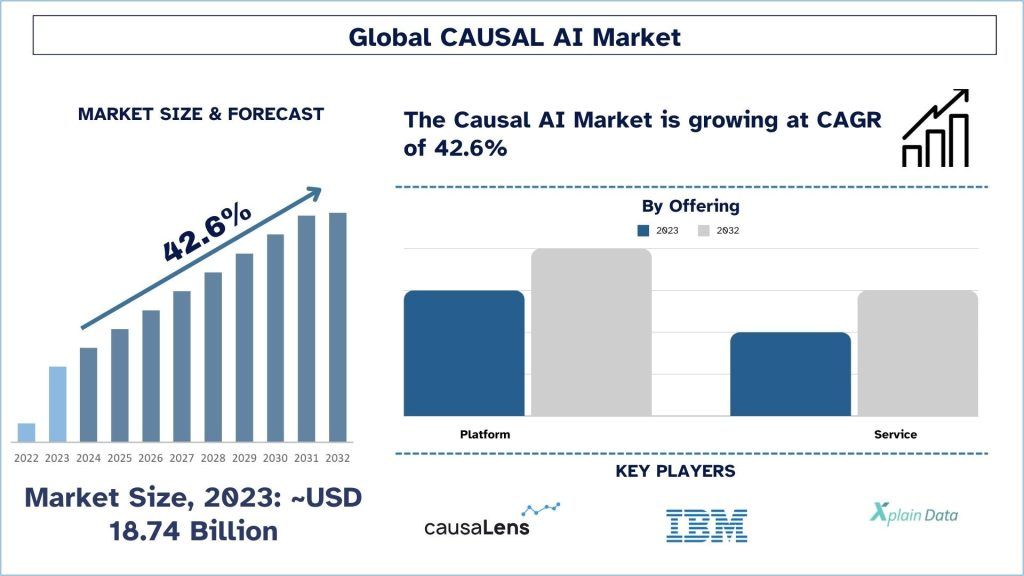- Trang chủ
- Về chúng tôi
- Ngành
- Dịch vụ
- Đọc
- Liên hệ với chúng tôi
Thị trường AI Nhân quả: Phân tích Hiện tại và Dự báo (2024-2032)
Tập trung vào Cung cấp (Nền tảng và Dịch vụ); Người dùng Cuối (BFSI, Chăm sóc Sức khỏe và Khoa học Đời sống, Bán lẻ và Thương mại Điện tử, Vận tải và Logistics, Sản xuất và Các ngành khác); và Khu vực/Quốc gia
Quy mô và dự báo thị trường AI nhân quả toàn cầu
Quy mô Thị trường AI nhân quả toàn cầu được định giá 18,74 tỷ USD vào năm 2023 và dự kiến sẽ tăng trưởng với tốc độ CAGR mạnh mẽ khoảng 42,6% trong giai đoạn dự báo (2024-2032) do các Chính phủ và cơ quan quản lý thúc đẩy các hệ thống AI có thể giải thích và công bằng, khiến AI nhân quả trở nên cần thiết để tuân thủ.
Phân tích thị trường AI nhân quả
Thị trường AI nhân quả trên toàn thế giới đề cập đến việc xây dựng và sử dụng các khuôn khổ trí tuệ nhân tạo tập trung vào các kết quả nhân quả, thay vì tương quan. AI nhân quả có thể cải thiện quá trình ra quyết định khi được sử dụng bằng cách xác định các yếu tố góp phần vào kết quả, tạo ra những cải tiến lớn trong các lĩnh vực như y tế, tài chính và quảng cáo. Các động lực cho sự tăng trưởng của thị trường này là nhu cầu cao hơn để có được các hệ thống dự đoán tốt hơn, các xu hướng mới đối với các giải pháp tùy chỉnh và sự cần thiết để quản lý rủi ro quan trọng tốt hơn. Khi các công ty tìm kiếm những cách tốt hơn để có thông tin được cải thiện cho hoạt động của họ, AI nhân quả tự đổi mới như một công nghệ đột phá giúp tăng cường việc ra quyết định và hoạt động trên toàn thế giới.
Xu hướng thị trường AI nhân quả toàn cầu
Phần này thảo luận về các xu hướng thị trường chính đang ảnh hưởng đến các phân khúc khác nhau của thị trường AI nhân quả toàn cầu, như được xác định bởi nhóm các chuyên gia nghiên cứu của chúng tôi.
Phân khúc Dịch vụ đang chuyển đổi ngành
Danh mục dịch vụ rất cần thiết cho sự tiến bộ của thị trường AI nhân quả vì nó cung cấp các giải pháp cụ thể mà các tổ chức cần để hiện thực hóa việc sử dụng AI nhân quả của họ, bao gồm tư vấn, tích hợp và dịch vụ bảo trì. Các dịch vụ như vậy hỗ trợ các tổ chức cải thiện hơn nữa mối liên kết giữa các giải pháp AI phức tạp cao và việc sử dụng thực tế của chúng, tìm ra những cách hiệu quả để tận dụng AI để trích xuất các mẫu và rút ra các kết luận về nguyên nhân và kết quả. Nhu cầu về các dịch vụ như tạo mô hình AI nhân quả, đào tạo và hỗ trợ đang gia tăng, đặc biệt khi các tổ chức tìm cách tăng cường việc ra quyết định trong các điều kiện phức tạp, hoạt động trong các bối cảnh không chắc chắn, do đó mở rộng thị trường. Hơn nữa, các dịch vụ như vậy giúp quá trình chuyển đổi sang AI nhân quả ít khó khăn hơn, điều này góp phần vào sự phát triển của một cơ sở người tiêu dùng lớn và việc ứng dụng công nghệ này trên nhiều lĩnh vực khác nhau.
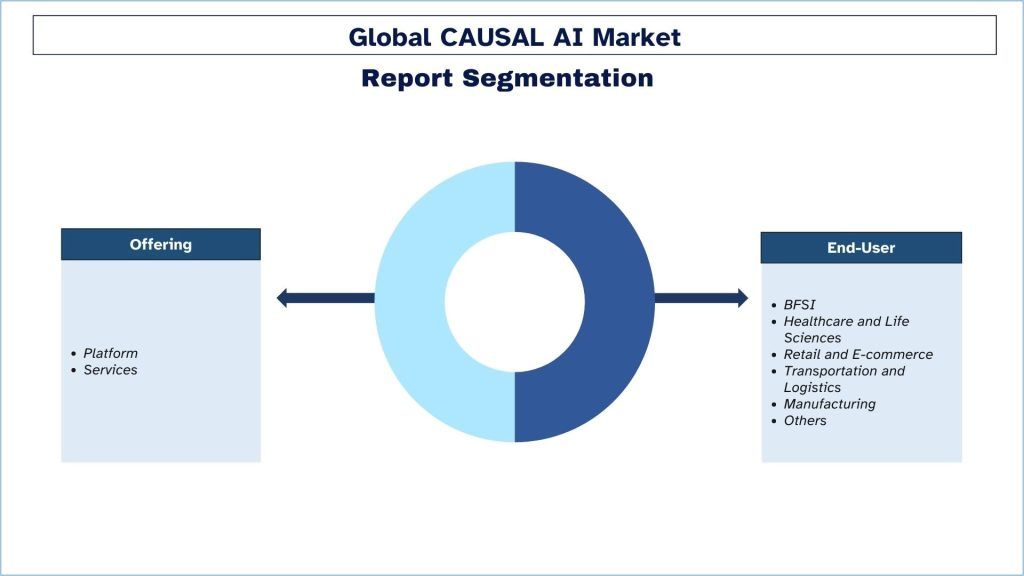
Bắc Mỹ dự kiến sẽ tăng trưởng với tốc độ CAGR nhanh nhất trong giai đoạn dự báo.
Thị trường AI nhân quả ở Bắc Mỹ đang phát triển nhanh chóng do nhu cầu về các khả năng trí tuệ nhân tạo sâu sắc hơn, không chỉ đơn thuần có khả năng hiển thị mối tương quan và nguyên nhân. Các hệ thống chăm sóc sức khỏe, dịch vụ tài chính và ngân hàng, và dịch vụ bán lẻ và bán hàng, trong số những lĩnh vực khác, là một số lĩnh vực chính đang sử dụng AI nhân quả để giúp đưa ra quyết định, cải thiện hoạt động và phục vụ khách hàng. Khu vực này được đặc trưng bởi một lĩnh vực công nghệ phát triển tốt, bao gồm các công ty AI và trung tâm nghiên cứu quan trọng, do đó khuyến khích những tiến bộ và tiến trình hơn nữa. Hơn nữa, việc tăng cường R&D về trí tuệ nhân tạo và số lượng ngày càng tăng của các kế hoạch kinh doanh định hướng dữ liệu đang mở rộng việc sử dụng AI nhân quả ngay cả ở Bắc Mỹ.
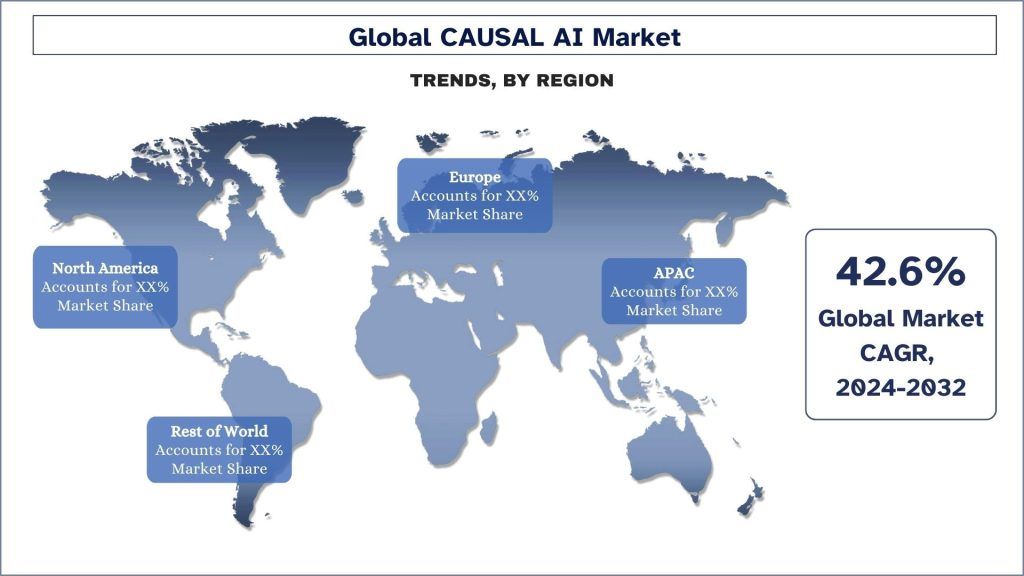
Tổng quan về ngành AI nhân quả toàn cầu
Thị trường AI nhân quả toàn cầu có tính cạnh tranh, với một số người chơi thị trường toàn cầu và quốc tế. Những người chơi chính đang áp dụng các chiến lược tăng trưởng khác nhau để tăng cường sự hiện diện trên thị trường của họ, chẳng hạn như quan hệ đối tác, thỏa thuận, hợp tác, ra mắt sản phẩm mới, mở rộng địa lý và sáp nhập và mua lại. Một số người chơi lớn đang hoạt động trên thị trường là IBM; Scalnyx; Causality Link LLC; causaLens; Omnics Data Automation (data, Inc.); Dynatrace LLC; Xplain Data GmbH; American Software, Inc. (Logility); Aitia; Geminos Software
Phạm vi Báo cáo Thị trường AI nhân quả Toàn cầu
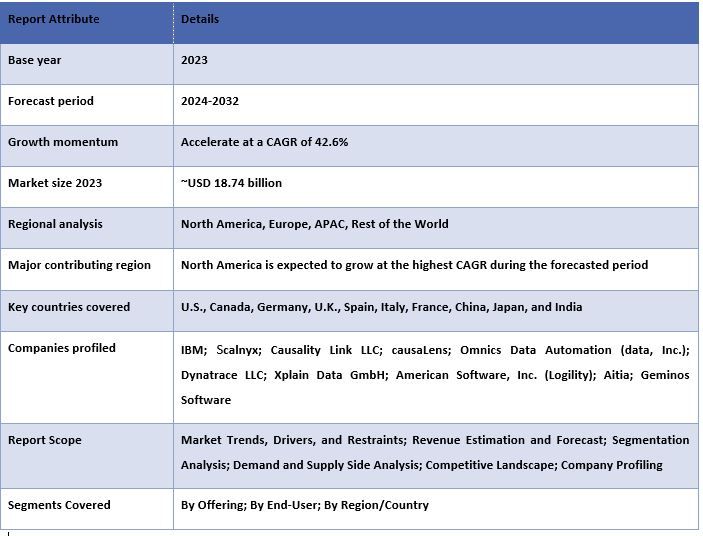
Lý do nên mua báo cáo này:
- Nghiên cứu bao gồm phân tích kích thước thị trường và dự báo được xác thực bởi các chuyên gia ngành hàng đầu đã được xác thực.
- Báo cáo tóm tắt đánh giá hiệu suất tổng thể của ngành trong nháy mắt.
- Báo cáo bao gồm phân tích chuyên sâu về các đối tác trong ngành nổi bật, tập trung chủ yếu vào tài chính kinh doanh chính, danh mục loại, chiến lược mở rộng và các phát triển gần đây.
- Kiểm tra chi tiết các động lực, hạn chế, xu hướng chính và cơ hội hiện hành trong ngành.
- Nghiên cứu bao gồm toàn diện thị trường trên các phân khúc khác nhau.
- Phân tích chuyên sâu về ngành ở cấp khu vực.
Tùy chọn tùy chỉnh:
Thị trường AI nhân quả toàn cầu có thể được tùy chỉnh thêm theo yêu cầu hoặc bất kỳ phân khúc thị trường nào khác. Bên cạnh đó, UMI hiểu rằng bạn có thể có nhu cầu kinh doanh riêng, do đó, vui lòng liên hệ với chúng tôi để có được một báo cáo hoàn toàn phù hợp với yêu cầu của bạn.
Mục lục
Phương Pháp Nghiên Cứu cho Phân Tích Thị Trường AI Nhân Quả Toàn Cầu (2024-2032)
Phân tích thị trường lịch sử, ước tính thị trường hiện tại và dự báo thị trường tương lai của thị trường AI Nhân Quả toàn cầu là ba bước chính được thực hiện để tạo và phân tích việc áp dụng AI Nhân Quả toàn cầu ở các khu vực chính. Nghiên cứu thứ cấp toàn diện đã được thực hiện để thu thập số liệu thị trường lịch sử và ước tính quy mô thị trường hiện tại. Thứ hai, để xác thực những thông tin chi tiết này, nhiều phát hiện và giả định đã được xem xét. Hơn nữa, các cuộc phỏng vấn sơ cấp toàn diện đã được thực hiện với các chuyên gia trong ngành trên toàn bộ chuỗi giá trị của thị trường AI Nhân Quả toàn cầu. Để giả định và xác thực số liệu thị trường thông qua các cuộc phỏng vấn sơ cấp, chúng tôi đã sử dụng phương pháp tiếp cận từ trên xuống/từ dưới lên để dự báo quy mô thị trường hoàn chỉnh. Sau đó, các phương pháp phân tích thị trường và phân tích tam giác dữ liệu đã được áp dụng để ước tính và phân tích quy mô thị trường của các phân khúc và phân khúc con của ngành liên quan. Phương pháp luận chi tiết được giải thích dưới đây:
Phân Tích Quy Mô Thị Trường Lịch Sử
Bước 1: Nghiên Cứu Chuyên Sâu Các Nguồn Thứ Cấp:
Một nghiên cứu thứ cấp chi tiết đã được tiến hành để thu thập quy mô thị trường lịch sử của thị trường AI Nhân Quả toàn cầu thông qua các nguồn nội bộ của công ty như báo cáo thường niên & báo cáo tài chính, các bài thuyết trình về hiệu quả hoạt động, thông cáo báo chí, v.v. và các nguồn bên ngoài bao gồm tạp chí, tin tức & bài viết, ấn phẩm của chính phủ, ấn phẩm của đối thủ cạnh tranh, báo cáo ngành, cơ sở dữ liệu của bên thứ ba và các ấn phẩm đáng tin cậy khác.
Bước 2: Phân Khúc Thị Trường:
Sau khi có được quy mô thị trường lịch sử của thị trường AI Nhân Quả toàn cầu, chúng tôi đã tiến hành phân tích thứ cấp chi tiết để thu thập thông tin chi tiết về thị trường lịch sử và chia sẻ cho các phân khúc & phân khúc con khác nhau ở các khu vực chính. Các phân khúc chính được bao gồm trong báo cáo dưới dạng dịch vụ cung cấp, người dùng cuối và khu vực. Phân tích cấp quốc gia sâu hơn đã được thực hiện để đánh giá việc áp dụng tổng thể các mô hình kiểm tra ở khu vực đó.
Bước 3: Phân Tích Yếu Tố:
Sau khi có được quy mô thị trường lịch sử của các phân khúc và phân khúc con khác nhau, chúng tôi đã tiến hành phân tích yếu tố chi tiết để ước tính quy mô thị trường hiện tại của thị trường AI Nhân Quả toàn cầu. Hơn nữa, chúng tôi đã tiến hành phân tích yếu tố sử dụng các biến phụ thuộc và độc lập như dịch vụ cung cấp, người dùng cuối và các khu vực thị trường AI Nhân Quả toàn cầu. Một phân tích kỹ lưỡng về các kịch bản cung và cầu đã được thực hiện có tính đến các quan hệ đối tác hàng đầu, các vụ sáp nhập và mua lại, mở rộng kinh doanh và ra mắt sản phẩm trên thị trường AI Nhân Quả toàn cầu.
Ước Tính & Dự Báo Quy Mô Thị Trường Hiện Tại
Định cỡ Thị trường Hiện tại: Dựa trên những thông tin chi tiết hữu ích từ 3 bước trên, chúng tôi đã đưa ra quy mô thị trường hiện tại, những người chơi chính trên thị trường AI Nhân Quả toàn cầu và thị phần của các phân khúc. Tất cả các tỷ lệ phần trăm chia sẻ và phân tích thị trường cần thiết đã được xác định bằng cách sử dụng phương pháp thứ cấp nói trên và đã được xác minh thông qua các cuộc phỏng vấn sơ cấp.
Ước tính & Dự báo: Để ước tính và dự báo thị trường, trọng số đã được gán cho một số yếu tố bao gồm các động lực & xu hướng, hạn chế và cơ hội có sẵn cho các bên liên quan. Sau khi phân tích các yếu tố này, các kỹ thuật dự báo có liên quan, tức là phương pháp tiếp cận từ trên xuống/từ dưới lên, đã được áp dụng để đưa ra dự báo thị trường năm 2032 cho các phân khúc và phân khúc con khác nhau trên các thị trường lớn trên toàn cầu. Phương pháp nghiên cứu được áp dụng để ước tính quy mô thị trường bao gồm:
- Quy mô thị trường của ngành, về mặt doanh thu (USD) và tỷ lệ chấp nhận thị trường AI Nhân Quả toàn cầu trên các thị trường lớn trong nước
- Tất cả tỷ lệ phần trăm chia sẻ, phân chia và phân tích của các phân khúc thị trường và phân khúc con
- Những người chơi chính trên thị trường AI Nhân Quả toàn cầu về các loại hình được cung cấp. Ngoài ra, các chiến lược tăng trưởng được những người chơi này áp dụng để cạnh tranh trên thị trường đang phát triển nhanh chóng
Xác Thực Quy Mô và Thị Phần Thị Trường
Nghiên cứu sơ cấp: Các cuộc phỏng vấn chuyên sâu đã được thực hiện với những Người dẫn đầu Ý kiến Chính (KOL) bao gồm các Giám đốc điều hành Cấp cao (CXO/VP, Trưởng phòng Kinh doanh, Trưởng phòng Tiếp thị, Trưởng phòng Vận hành, Trưởng phòng Khu vực, Trưởng phòng Quốc gia, v.v.) trên khắp các khu vực chính. Các phát hiện nghiên cứu sơ cấp sau đó đã được tóm tắt và phân tích thống kê đã được thực hiện để chứng minh giả thuyết đã nêu. Thông tin đầu vào từ nghiên cứu sơ cấp đã được hợp nhất với các phát hiện thứ cấp, do đó biến thông tin thành thông tin chi tiết hữu ích.
Phân Chia Người Tham Gia Sơ Cấp ở Các Khu Vực Khác Nhau
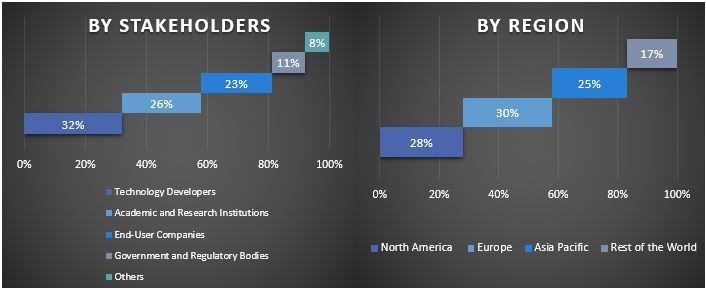
Kỹ Thuật Thị Trường
Kỹ thuật phân tích tam giác dữ liệu đã được sử dụng để hoàn thành việc ước tính thị trường tổng thể và đưa ra các số liệu thống kê chính xác cho từng phân khúc và phân khúc con của thị trường AI Nhân Quả toàn cầu. Dữ liệu được chia thành nhiều phân khúc và phân khúc con sau khi nghiên cứu các thông số và xu hướng khác nhau trong dịch vụ cung cấp, người dùng cuối và khu vực của thị trường AI Nhân Quả toàn cầu.
Mục Tiêu Chính của Nghiên Cứu Thị Trường AI Nhân Quả Toàn Cầu
Các xu hướng thị trường hiện tại & tương lai của thị trường AI Nhân Quả toàn cầu đã được xác định chính xác trong nghiên cứu. Các nhà đầu tư có thể thu được những thông tin chi tiết chiến lược để dựa vào quyết định của họ về các khoản đầu tư dựa trên phân tích định tính và định lượng được thực hiện trong nghiên cứu. Các xu hướng thị trường hiện tại và tương lai đã xác định mức độ hấp dẫn tổng thể của thị trường ở cấp khu vực, cung cấp một nền tảng cho người tham gia công nghiệp khai thác thị trường chưa được khai thác để hưởng lợi từ lợi thế của người đi đầu. Các mục tiêu định lượng khác của các nghiên cứu bao gồm:
- Phân tích quy mô thị trường hiện tại và dự báo của thị trường AI Nhân Quả toàn cầu về giá trị (USD). Ngoài ra, phân tích quy mô thị trường hiện tại và dự báo của các phân khúc và phân khúc con khác nhau.
- Các phân khúc trong nghiên cứu bao gồm các lĩnh vực Dịch vụ cung cấp, người dùng cuối và khu vực.
- Xác định và phân tích khuôn khổ pháp lý cho ngành.
- Phân tích chuỗi giá trị liên quan đến sự hiện diện của các trung gian khác nhau, cùng với việc phân tích hành vi của khách hàng và đối thủ cạnh tranh của ngành.
- Phân tích quy mô thị trường hiện tại và dự báo của thị trường AI Nhân Quả toàn cầu cho các khu vực chính.
- Các quốc gia chính của các khu vực được nghiên cứu trong báo cáo bao gồm Châu Á Thái Bình Dương, Châu Âu, Bắc Mỹ và Phần còn lại của Thế giới
- Hồ sơ công ty của thị trường AI Nhân Quả toàn cầu và các chiến lược tăng trưởng mà những người chơi áp dụng để duy trì trên thị trường đang phát triển nhanh chóng.
- Phân tích chuyên sâu ở cấp khu vực của ngành
Câu hỏi thường gặp Câu hỏi thường gặp
Câu hỏi 1: Quy mô thị trường hiện tại và tiềm năng tăng trưởng của thị trường AI Nhân quả toàn cầu là gì?
Q2: Đâu là những yếu tố thúc đẩy sự tăng trưởng của thị trường AI Nhân quả toàn cầu?
Câu hỏi 3: Phân khúc nào có thị phần lớn nhất trên thị trường Causal AI toàn cầu theo danh mục cung cấp?
Q4: Đâu là các công nghệ và xu hướng mới nổi trong thị trường AI Nhân quả toàn cầu?
Q5: Khu vực nào sẽ thống trị thị trường Causal AI toàn cầu?
Liên quan Báo cáo
Khách hàng đã mua mặt hàng này cũng đã mua

